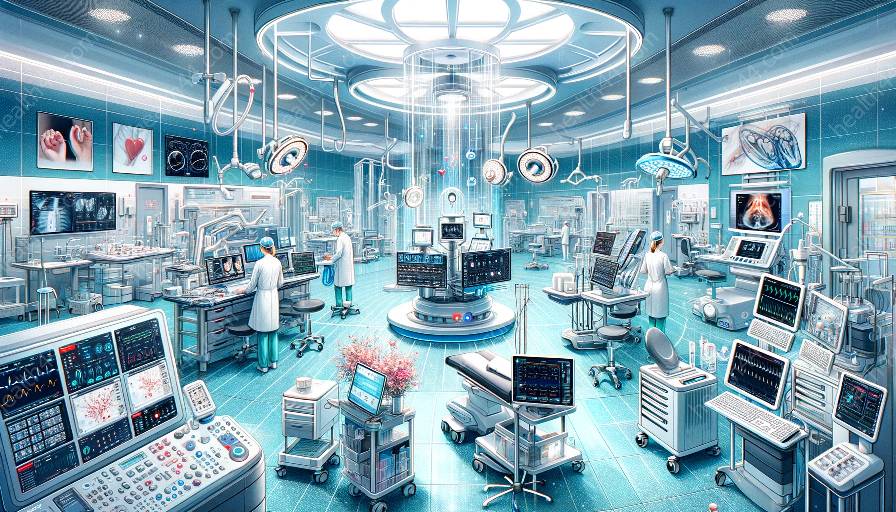Respiratory support and pulmonary care medical devices play a crucial role in maintaining and enhancing the respiratory function of individuals with compromised lung health. This topic cluster delves into the intersection of biomechanics, medical devices, and advancements in respiratory support and pulmonary care.
The Intersection of Biomechanics and Medical Devices in Respiratory Support and Pulmonary Care
Biomechanics, the study of the structure and function of biological systems using the principles of mechanics, is integral to the development and optimization of medical devices for respiratory support and pulmonary care. By applying biomechanical principles, researchers and engineers can design devices that effectively assist with breathing, airway management, and lung function assessment.
Pulmonary care medical devices are designed to address a wide range of respiratory conditions, including asthma, chronic obstructive pulmonary disease (COPD), cystic fibrosis, and acute respiratory distress syndrome (ARDS). These devices are tailored to provide mechanical support, facilitate airway clearance, and improve ventilation, ultimately enhancing the overall respiratory function of patients.
Types of Respiratory Support and Pulmonary Care Medical Devices
There is a diverse array of medical devices that fall under the umbrella of respiratory support and pulmonary care. These devices can be categorized based on their specific functions:
- Ventilators: Ventilators, also known as mechanical ventilators, are essential for individuals with respiratory failure or insufficient breathing. They deliver a predetermined mix of oxygen and air to the lungs, supporting the breathing process.
- Nebulizers: Nebulizers are commonly used to administer medication in the form of mist that can be inhaled into the lungs. They are beneficial for individuals with conditions such as asthma or COPD.
- Oxygen Concentrators: Oxygen concentrators are devices that extract oxygen from the air and deliver it to the patient at higher concentrations, particularly useful for individuals with chronic respiratory insufficiency.
- Chest Physiotherapy Devices: These devices are designed to assist with airway clearance and mucus mobilization, promoting effective respiratory function for individuals with conditions such as cystic fibrosis.
- Pulse Oximeters: Pulse oximeters are non-invasive devices used to monitor the oxygen saturation of arterial blood, providing valuable information about the patient's respiratory status.
Advancements in Respiratory Support and Pulmonary Care Medical Devices
The field of respiratory support and pulmonary care continues to witness remarkable advancements in medical device technology. These innovations aim to improve patient outcomes, enhance user experience, and ensure greater accessibility to effective respiratory support. Some key advancements include:
- Smart Ventilators: Smart ventilators integrate advanced sensors and algorithms to provide personalized ventilation strategies, adapting to the patient's respiratory patterns and needs.
- Nanotechnology-based Nebulizers: Nebulizers incorporating nanotechnology enable efficient delivery of medications in precise doses, enhancing the effectiveness of respiratory treatments.
- Wireless Monitoring Systems: Wireless monitoring systems offer real-time tracking of respiratory parameters, allowing healthcare providers to remotely monitor and intervene when necessary.
- Artificial Intelligence (AI) in Oxygen Delivery: AI-powered oxygen delivery systems analyze patient data to optimize the delivery of oxygen, ensuring optimal respiratory support.
- Miniaturized Pulse Oximeters: The development of compact, wearable pulse oximeters expands the possibilities for continuous respiratory monitoring in various settings, including home care.
Bridging Biomechanics with Medical Devices for Enhanced Pulmonary Care
The convergence of biomechanics and medical devices holds promise for further advancements in pulmonary care. By leveraging biomechanical principles, researchers and engineers can refine the design and functionality of respiratory support devices, ensuring that they effectively complement the physiological mechanisms of the respiratory system.
Furthermore, the integration of biomechanics into the development of medical devices allows for a deeper understanding of the biomechanical behavior of the respiratory system under different conditions, leading to more tailored and effective interventions for patients with respiratory challenges.
Conclusion
Respiratory support and pulmonary care medical devices continue to evolve, driven by the intersection of biomechanics and medical device innovation. The ongoing advancements in this field hold the potential to transform respiratory healthcare, improving patient outcomes and enhancing quality of life for individuals with respiratory conditions.


